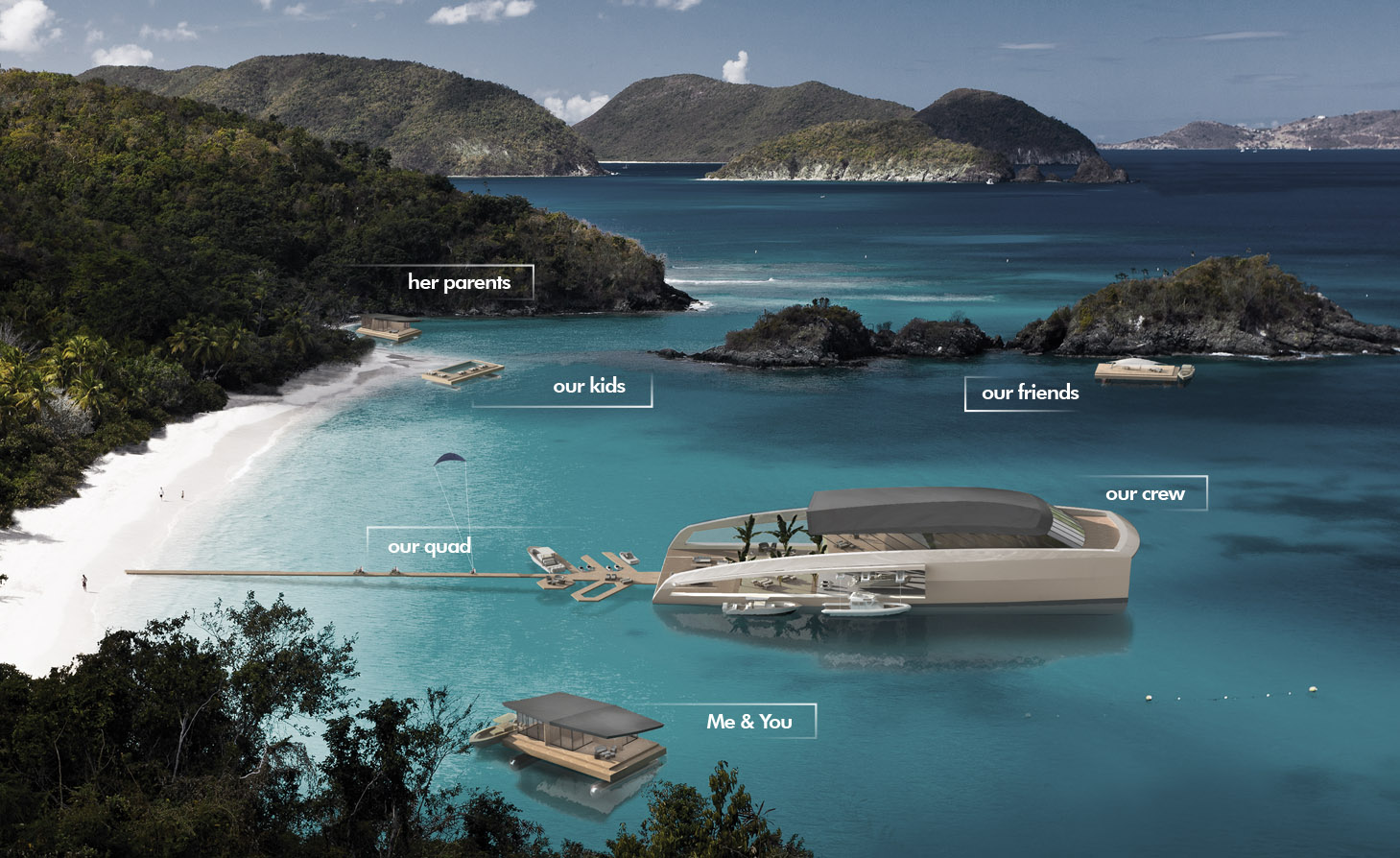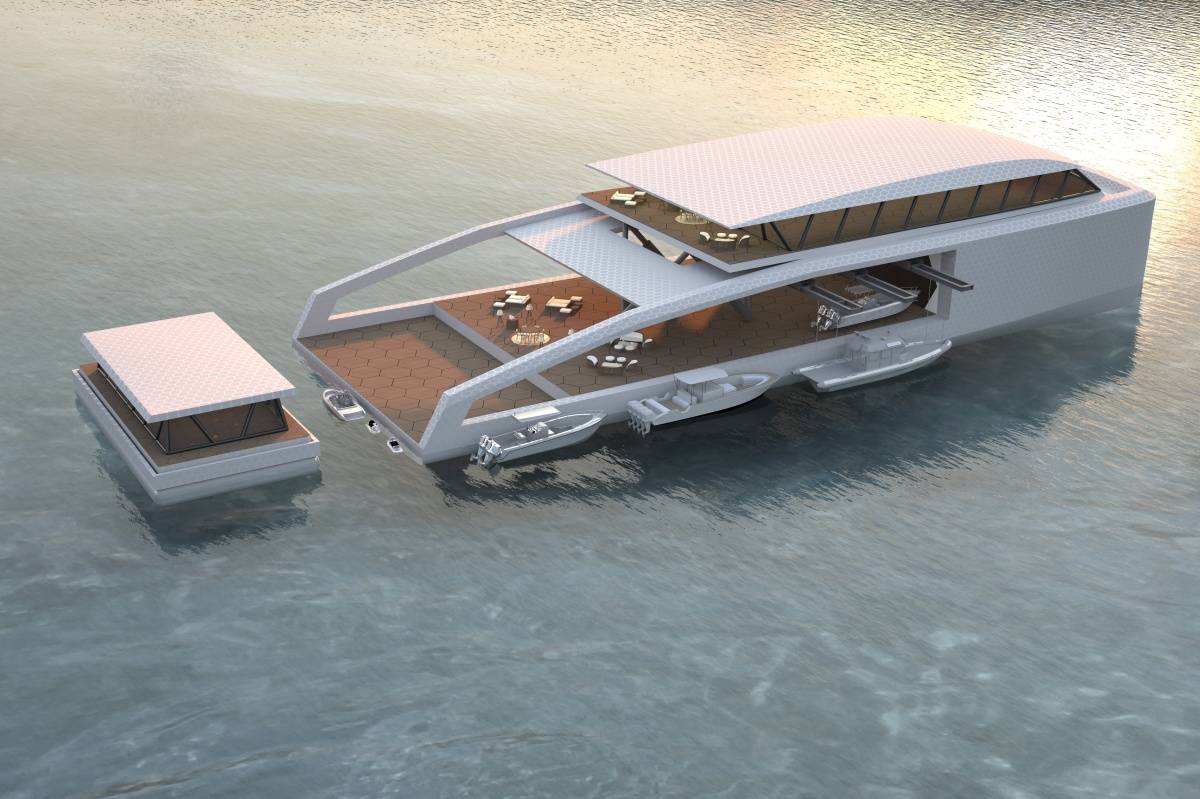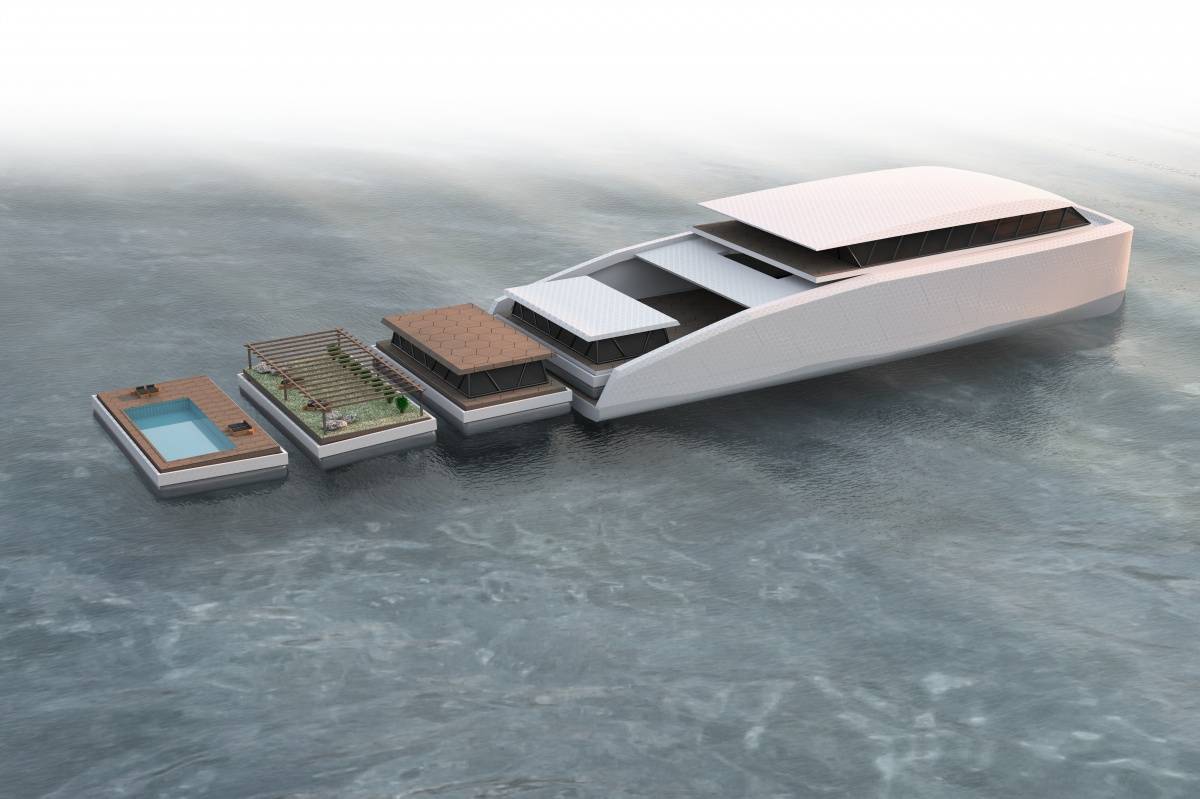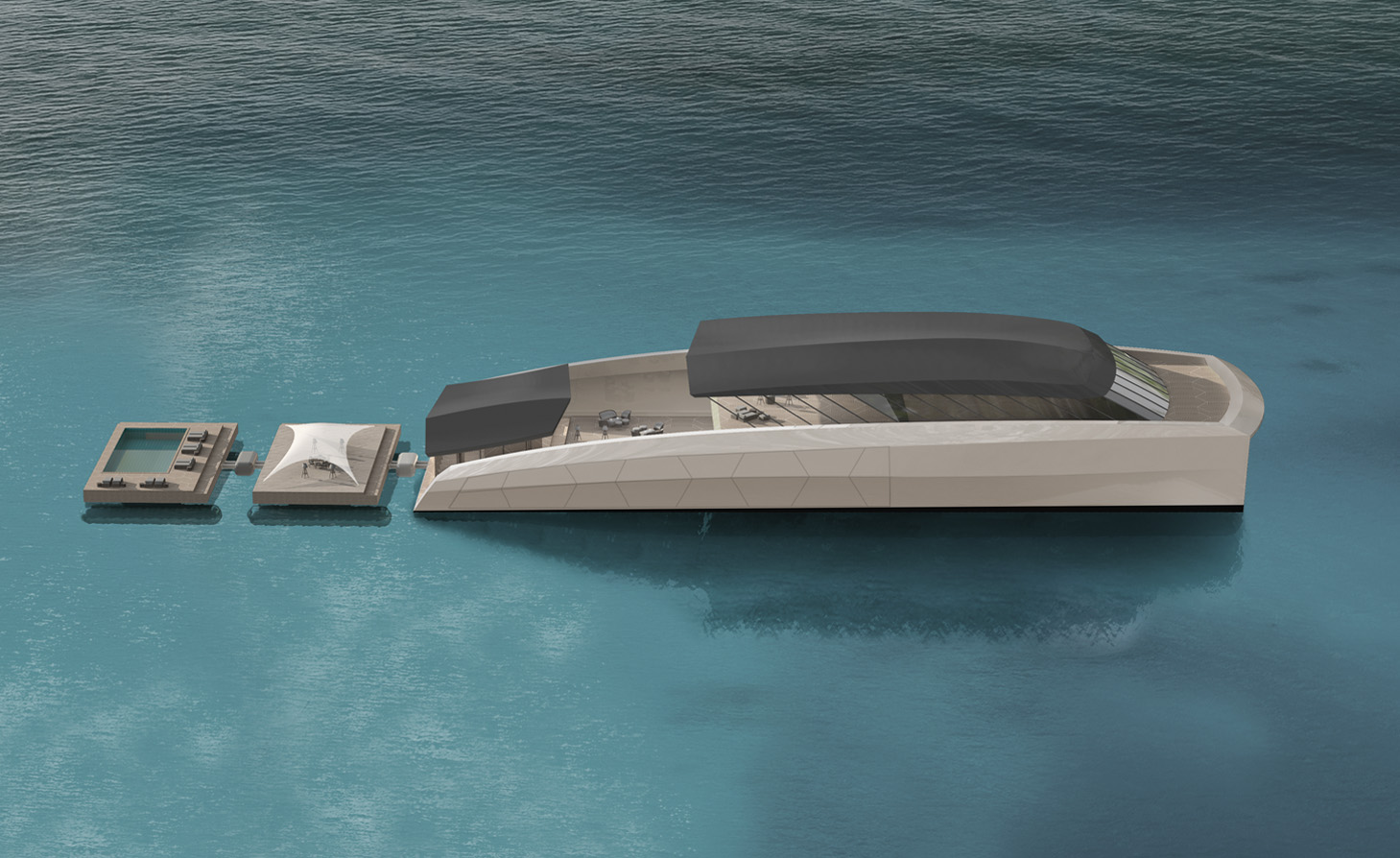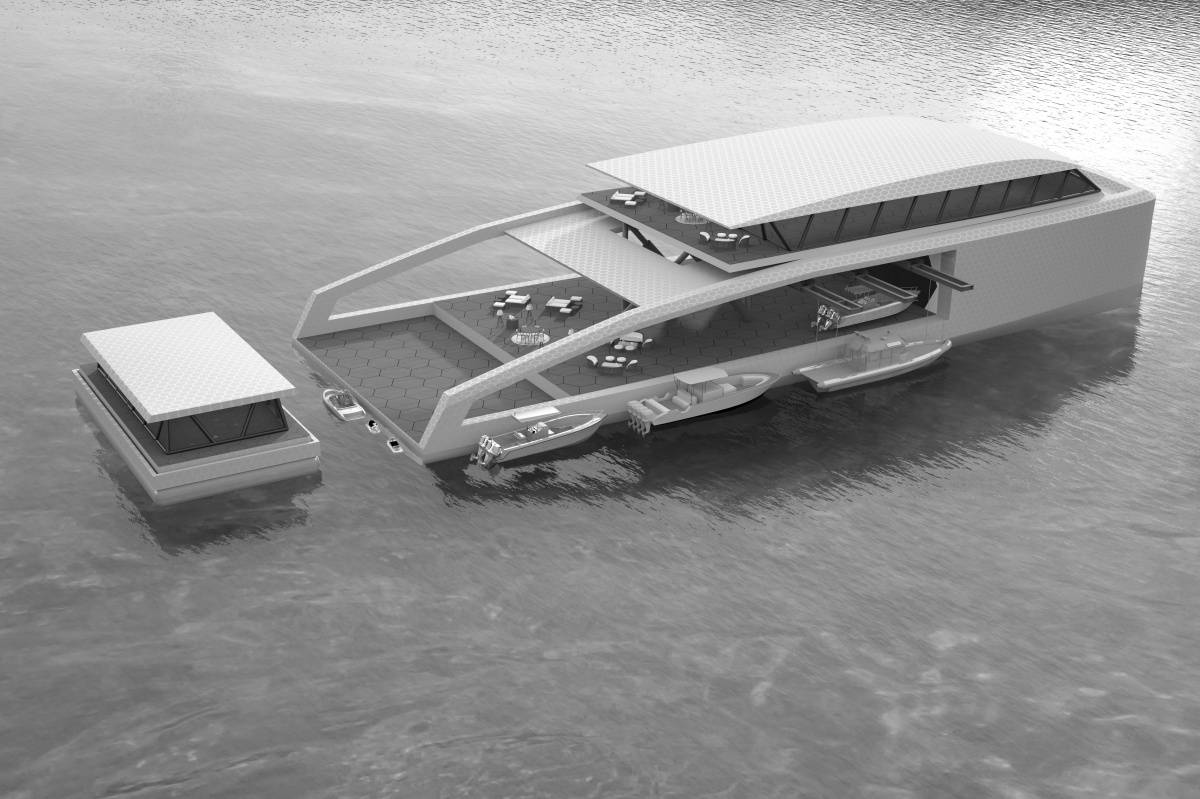Genoese Stefano Pastrovich, the head of Monaco-based Pastrovich Studios, has a clear vision of the final X R-Evolution project, according to Haute Living.
“Lay anchor in the Virgin Islands and deploy your apartments anywhere you desire,” suggested Pastrovich. “Be waited on hand and foot by the crew living aboard the mother-ship or go it alone in your own isolated beach fronted property.”
More: The biggest, baddest, most extravagant superyachts ever conceived
The “daughter vessels” can take other forms than apartments. “Imagine that instead of apartments,” says Pastrovich, “Each daughter vessel is a different luxury object; a swimming pool, a garden, even an artificial beach complete with its own palm trees.”
The X R-Evolution concept uses honeycomb construction for maximum strength with the minimum material. The hull is carbon fiber and the floating decks are composed of titanium. A self-stabilizing hexapod with six hydraulic cylinders keeps the upper deck level in rough seas, while gyroscopes minimize roll for the rest of the superyacht.
The concept example is a 77-meter (253 feet) superyacht. Hydraulic lifts would stack modular units on the aft deck while in transit. Once the destination is reached, the units are placed in the water in desired locations. Tenders and pleasure craft are stored midships during long passages but are tethered alongside for use by passengers and crew.
Owners who wish to build various attached or standalone decks, pathways, and boat slip configurations can use portable modular trapezoid sections for that purpose. The simplest application would be a walkway to a beach, but possibilities abound, limited only by the number of sections you want to haul around with you.
Patrovich has been working on the various modular components in the X R-Evolution concept for more than a decade. The big idea is providing superyacht owners with flexibility after their (generally) huge yachts are finished. They’ll always have choices to arrange and rearrange spaces and modules. Plus, once the superyacht reaches its final destination for a given journey, the owners and some lucky guests can choose to remain on the main vessel with the crew or gain more privacy with a modular apartment.
